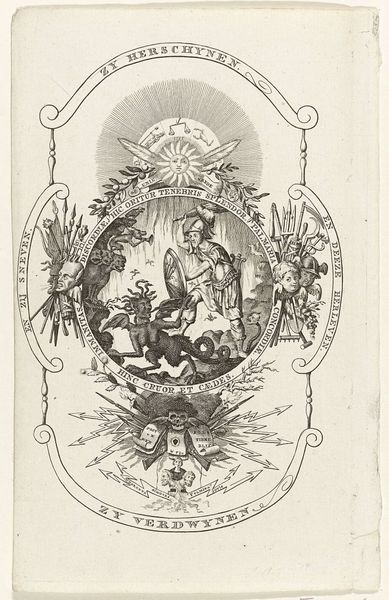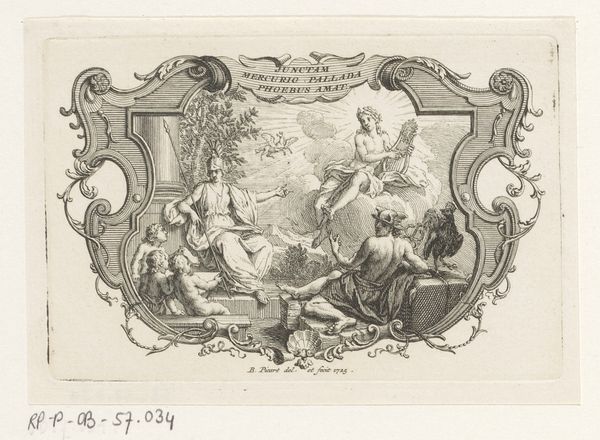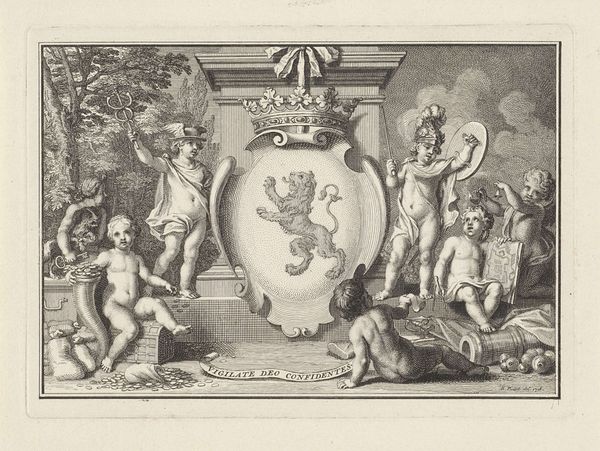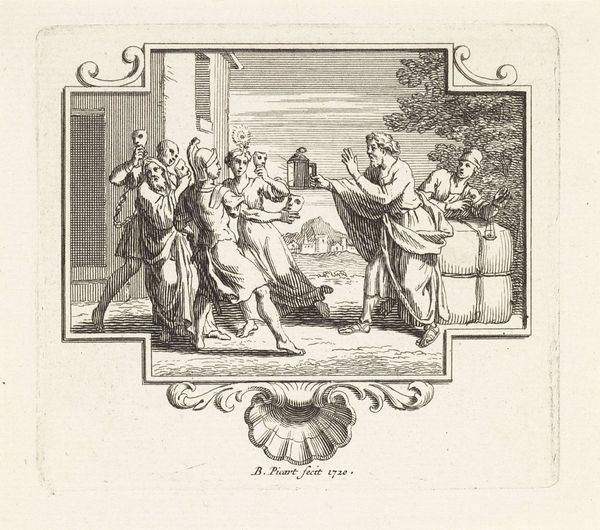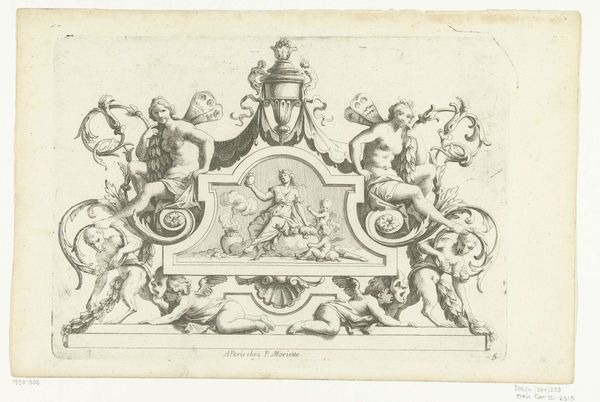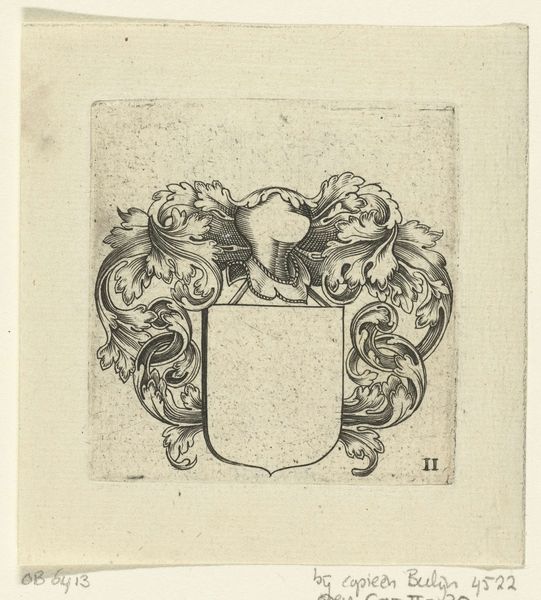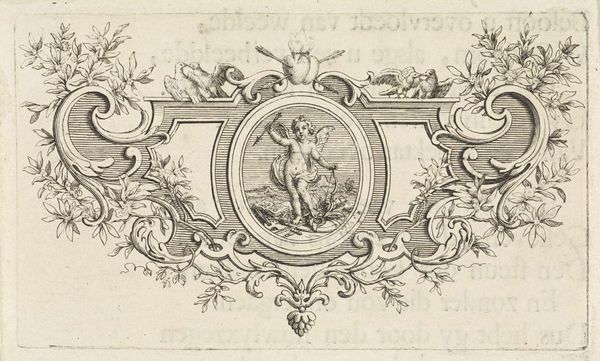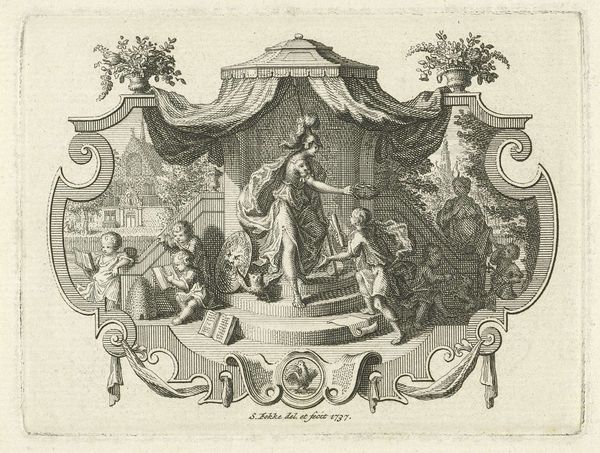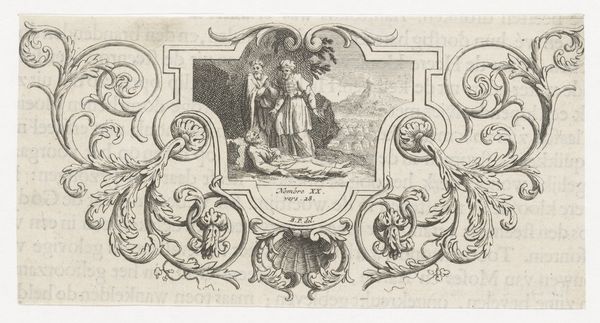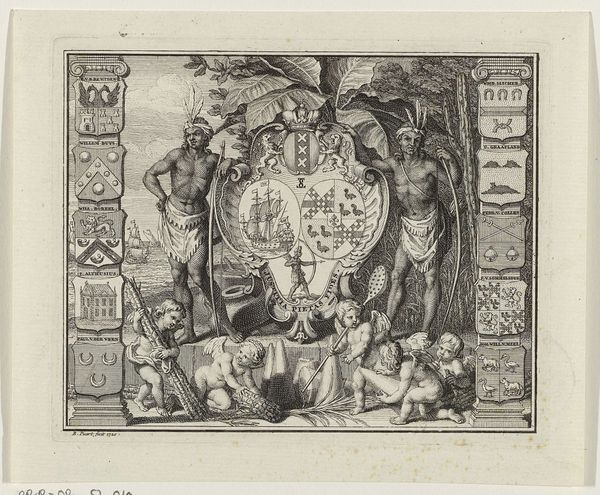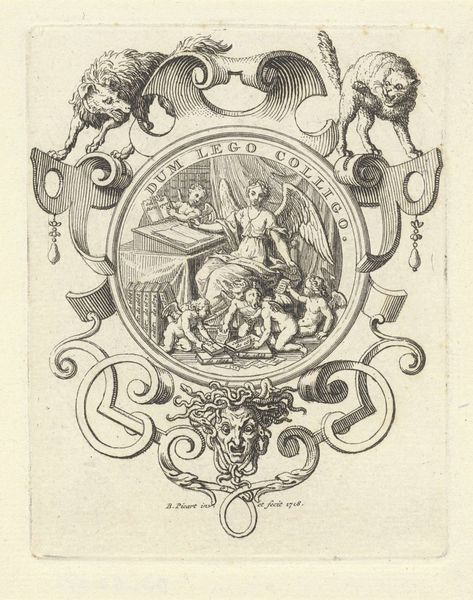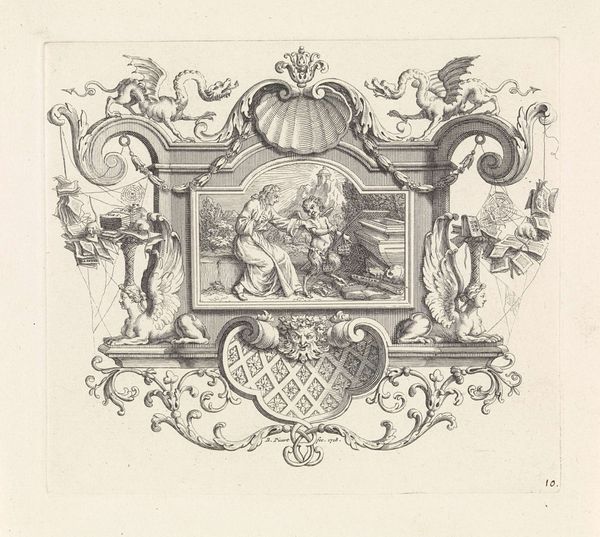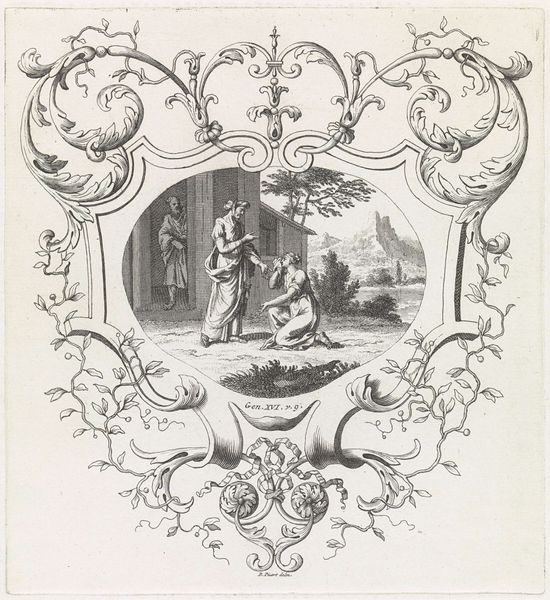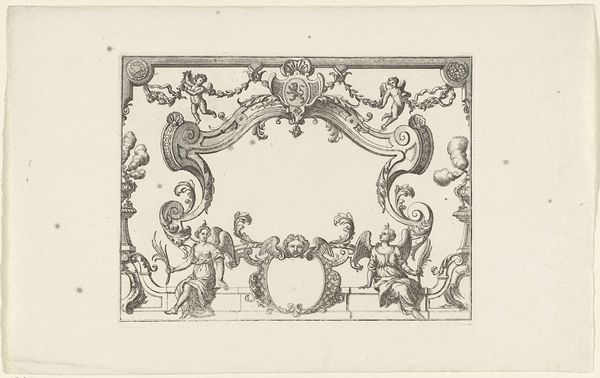
Lidmaatschapskaart voor de Vaderlandsche Sociëteit te Utrecht, 1795 1795
graphic-art, print, engraving
portrait
graphic-art
neoclacissism
allegory
figuration
line
history-painting
academic-art
engraving
Dimensions: height 111 mm, width 130 mm
Copyright: Rijks Museum: Open Domain
Editor: This is a membership card for the "Vaderlandsche Societeit te Utrecht," made in 1795 by Reinier Vinkeles. It's an engraving, full of neoclassical imagery and playful cherubs, but also feels... weighty, somehow. What do you make of this piece? Curator: It’s fascinating how seemingly innocuous images like this reflect the powerful sociopolitical undercurrents of their time. The “Vaderlandsche Societeit” or Patriotic Society was part of a broader Patriot movement in the Netherlands advocating for democratic reforms. So, while the cherubs and allegorical figures seem innocent, they're actually conveying a politically charged message. Notice the scales of justice; how might that symbolism be working here, do you think? Editor: I see what you mean! The scales imply a need for balance and fairness, things they felt were lacking under the existing regime, maybe? And isn't that a liberty cap on the pole carried by one of the figures? Curator: Exactly! That cap was a very common symbol of liberty during this period, signaling their revolutionary aspirations. Think of the French Revolution happening simultaneously; these societies were heavily influenced by Enlightenment ideals and sought similar reforms in the Dutch Republic. The engraving itself, its medium, also speaks volumes about the democratization of information. Prints allowed for broader dissemination of political ideas, a critical aspect of this revolutionary period. What effect might the classical style have had on its original audience? Editor: I suppose it lends an air of respectability and legitimacy to what might otherwise be seen as radical ideas. Makes them seem more grounded in tradition, ironically. Curator: Precisely! The card becomes a powerful piece of propaganda, subtly shaping public opinion and fostering a sense of collective identity among members of the society. It makes you consider how artistic expression intertwines with and actively shapes sociopolitical movements. Editor: It definitely shifts how I see this piece. I went from cute cherubs to revolutionary messaging in, like, a minute. I'll never look at neoclassical art the same way again. Thanks for the insight!
Comments
No comments
Be the first to comment and join the conversation on the ultimate creative platform.
